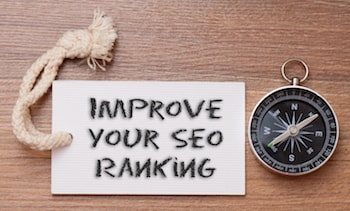SEO Tips For Organizations That Want to Get Bigger and Better
 The curious thing about medical groups and hospitals that want to be the “best in class” is that, often, they are already the leaders in the marketplace. Think about that for a minute.
The curious thing about medical groups and hospitals that want to be the “best in class” is that, often, they are already the leaders in the marketplace. Think about that for a minute.
The top of the line wants to beat itself and set a new, higher standard. They know that they are good at what they do. And they appreciate being at the top of their professional game, and want to stay that way.
But, it turns out that these facilities, practices and providers all want to improve and maintain the leadership position in the community. The best in class wants to be even better…and that’s a serious challenge. Being found online, via keyword searches, is the primary objective.
SEO for healthcare practices and providers can be powerful, but complex. Fortunately, your biggest helper is the largest search-engine itself, and the official Google Blog. Here are a few SEO tips and techniques that can help you get started.
Search engine optimization best practices to help Google find your website…
One up-front caveat—some information can become a bit technical. So if you feel a bit in the dark, bringing experienced professional help onboard (early in the process is best) will save considerable time and expense. Some of the Google advice:
- Ensure that all pages on the site can be reached by a link from another findable page.
- Provide a sitemap file with links that point to the important pages on your site.
- Provide a human-readable list of these links (called a site index or sitemap page).
- Limit the number of links on a page to a reasonable number.
- Submit your site to Google at http://www.google.com/submityourcontent/ .
- Confirm that sites that should know about your pages are aware your site is online.
There’s more helpful direction on the webmaster guidelines page.
Growing your SEO vocabulary builds knowledge and search results…
As you become more comfortable with the SEO language and terms of art, it’s easier to work with professional colleagues—building websites, creating landing pages or making adjustments for greater search visibility. Here is a dozen fundamental SEO terms as a starter list, and to help you avoid buzzwords or jargon:
301 Redirect: Or HTTP 301, is a search program message that accounts for a permanent move from one (old) URL location to another (new) URL address. The system maintains traffic flow, sending the visitor and the search engine to the proper address.
Analytics: Collecting and compiling various website data—such as users and user sources—for performance analysis and interpretation.
Backlink: Refers to a hyperlink that is inbound to the site from another website. Search engine algorithms apply a positive weight for incoming links that reflect quality, relevance and authority by linking to your website. (See also, Link Building.)
Canonicalization: When search engines discover multiple URLs for a page of content, canonicalization identifies the most appropriate URL among several options.
H1 Tag: One of several “tag” terms. H1 Tag is a label that identifies the rank or importance of the main heading for a page. Within a webpage, headings can rank from H1 to H6; H6 being least important.
Meta Description Tag: This is the brief summary of page content, usually 160 characters or less. Sometimes used by search engines, this text quickly advises the visitor about the page or information.
Title Tag: This is the HTML that describes the title of a page. Search engines value the Title Tag information for content. In addition, this description appears as text for results listings and some social sites.
Indexing: This is the process step whereby search engines crawl the site and create a copy of pages. Until this step is complete, the page or site is unknown to the search engine and not provided to a user.
Link Building: This process is intended to boost search ranking by attracting backlinks to the site using various legitimate means. (See also, Backlink.)
Organic vs. Paid Search Results: Organic, or “natural’” search results list the content that was found closely relating to the particular search terms used. Contrast this with Paid Search where the results are essentially advertisements that appear in response to query using specific keywords.
SERP: The Search Engine Results Page (SERP) provides a list of those paid and organic responses to the user’s keyword search. Effective SEO techniques are intended to positively appeal to the search algorithm so that the website appears high on the list of results for selected keywords.
White Hat: Derived from a throwback term that implies “good guy,” sound, or ethical SEO techniques that legitimately appeal to a search algorithm and positively influence a higher results position. Contrast this with “black hat” methods that use undesirable or inappropriate tactics.
Highly effective Search Engine Optimization is a complicated and technical process. The added challenge of SEO is that it attempts to satisfy the search engine’s highly complex computer algorithm—which is a closely held secret. This is why the best course is to hire skilled and experienced professional assistance for the best possible results.









